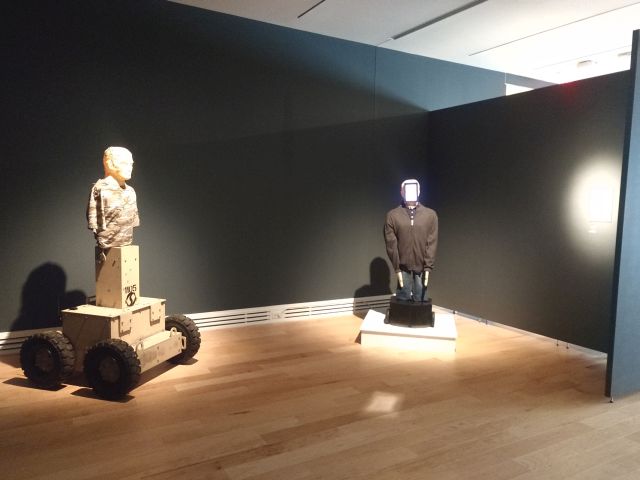On Friday, February 11, we officially opened Motion/Emotion: Exploring Affect from Automata to Robots to the public. For the past few days, I’ve been busy with press previews, VIP tours, and the public opening. After more than a year of research, on-site visits, virtual meetings, and writing, this exhibition is finally on view. Let’s take a look!
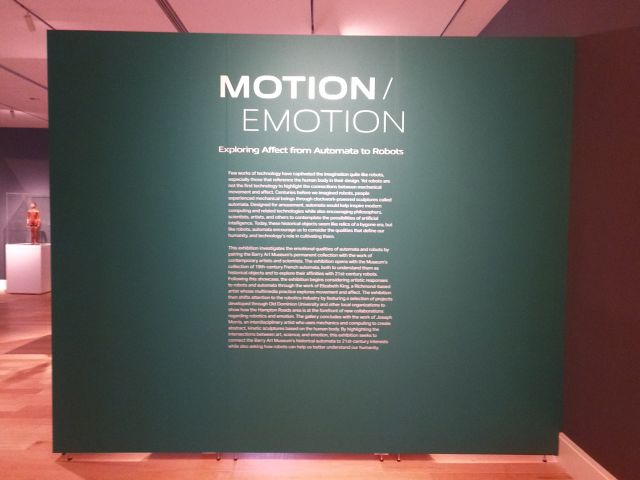
As I mentioned in previous posts, the show is divided into sections, starting with the historical automata and concluding with contemporary art installations. There’s a notable change in scale throughout the show, beginning with the automata and getting progressively larger in scale until a single artwork takes up an entire wall. In terms of chronology, the selection spans about 170 years, with the earliest automaton dating to around 1850, and the most recent robot being completed within the last few months. With the exception of the online map show I put together for the Mariners’ Museum, which looked at about three centuries’ worth of material, this is one of the most expansive shows I’ve done from a time standpoint.
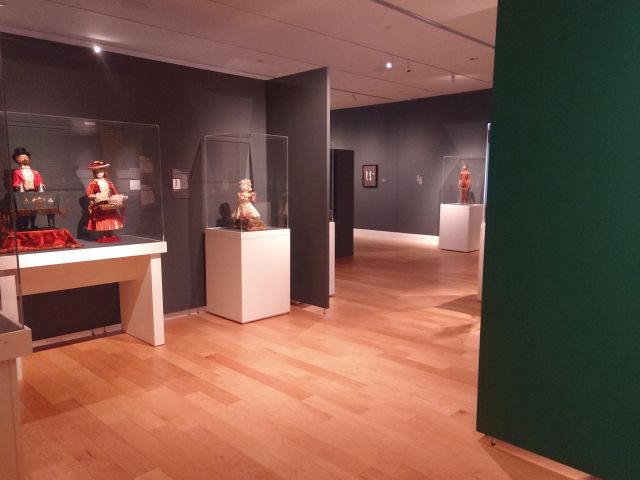
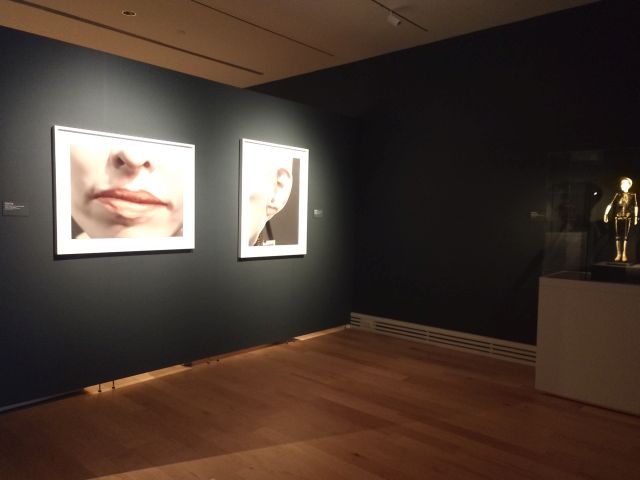
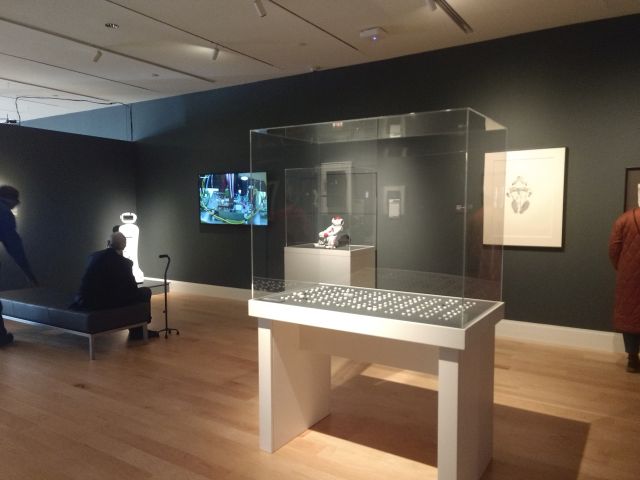
As with any exhibition, this show went through a lot of changes over the course of its development, with the final iteration bearing little resemblance to my initial proposals. The earliest versions of the exhibition had the automata sprinkled throughout the gallery, for instance, but as we started including an increasing variety of objects, we opted to subdivide the show by object type to maintain some sense of organization and coherency. Readers of this blog will also know that we contemplated including prosthetics, artificial intelligence, artist-robot collaborations, and other themes, and any one of these would have made for an engaging, rigorous show. Yet we ultimately decided to include industrial robots produced within the extended ODU community, challenging the boundaries of the art museum itself by including objects that would never be classified as art in the conventional sense. It was a direction we debated for months, but in the end, we decided that it would enable the museum to serve as an interdisciplinary space, enabling artists, engineers, and others to share their thoughts on technology and its role in our lives.
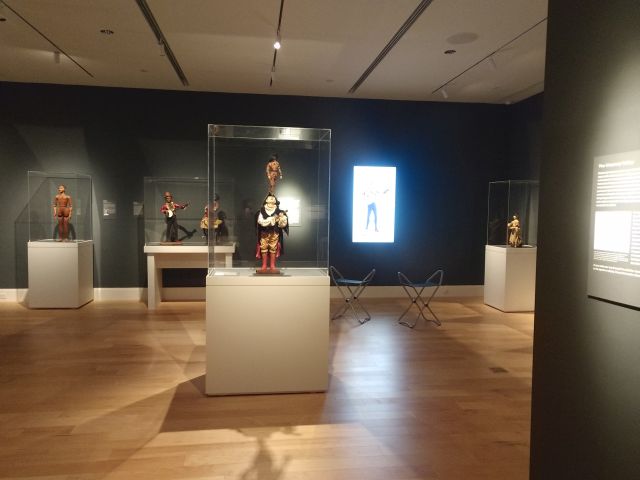
We expect visitors to experience a range of responses to the show, positive as well as negative. In the case of the automata, we used the exhibition as an opportunity for viewers to encounter them as kinetic objects by debuting the videos we filmed of them in action earlier this year. But we also contextualize them as products of both an ongoing Orientalist tradition and nineteenth-century colonialism. Rather than rely on the language of whimsy so often attributed to automata, we focused on assessing them as historical objects, directly addressing rather than ignoring their more problematic qualities.
We’re also anticipating strong reactions to the industrial robots. Pieces like David’s Project, a telehealth robot designed for children through ODU’s VMASC and the CHKD, will undoubtedly invoke a range of emotions ranging from heartwarming to heartbreaking. I also expect some of the more polarizing responses to come from the two SimIs projects, since one trains people to shoot effectively while the other addresses police aggression. Indeed, it was these pieces in particular that encouraged us to include a comment board in the education space outside the gallery, encouraging visitors to name and express their feelings following the show. It’ll be interesting to see how viewers respond. I know I’ve experienced a range of emotions to the works in the show, from fascination to discomfort, but everyone’s experience is different, and their responses are equally valid.
But while I didn’t always feel comfortable with the works, I’m proud of what I ultimately put together. In terms of scale, this isn’t the largest show I’ve worked on (that goes to the sprawling RAiR at 50), but it is one of the most intellectually challenging shows I’ve attempted, not only for its variety in subject matter, but for its willingness to delve into difficult topics. From addressing colonialist subject matter to highlighting the interconnectedness between contemporary robotics and the military, we decided not to shy away from potentially challenging subject matter. It’s also been an opportunity to further my curatorial practice by more openly embracing collaborative working methods. From asking all people represented in the exhibition to read, critique, or rework labels, to incorporating suggestions from art handlers and artists alike regarding the layout, I made sure I was not the sole creative voice in this exhibition, and I think the resulting installation is all the richer for it. No exhibition is perfect, but I’m proud of the work we’ve done.
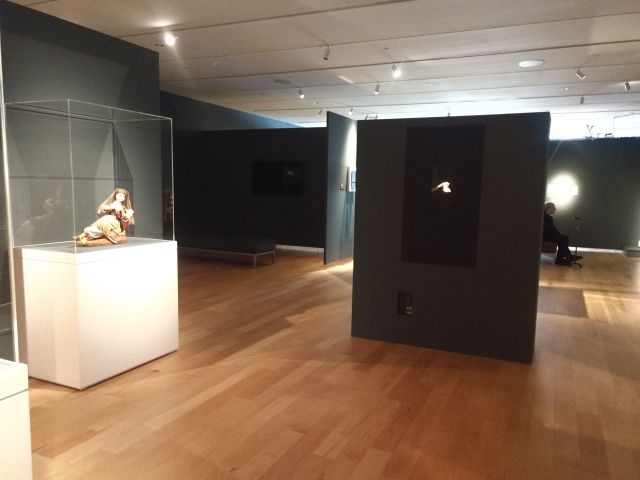
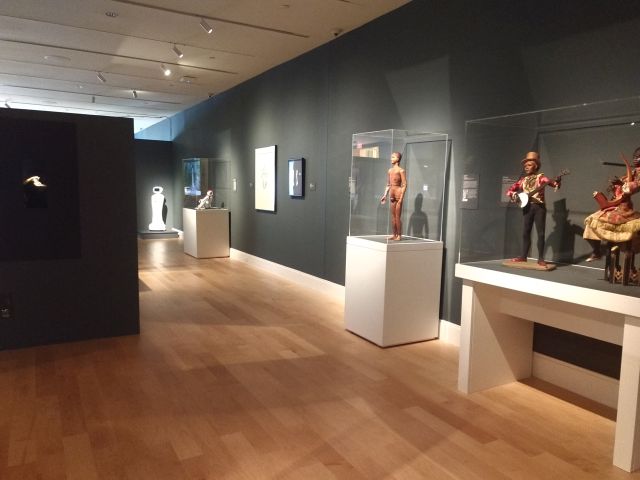
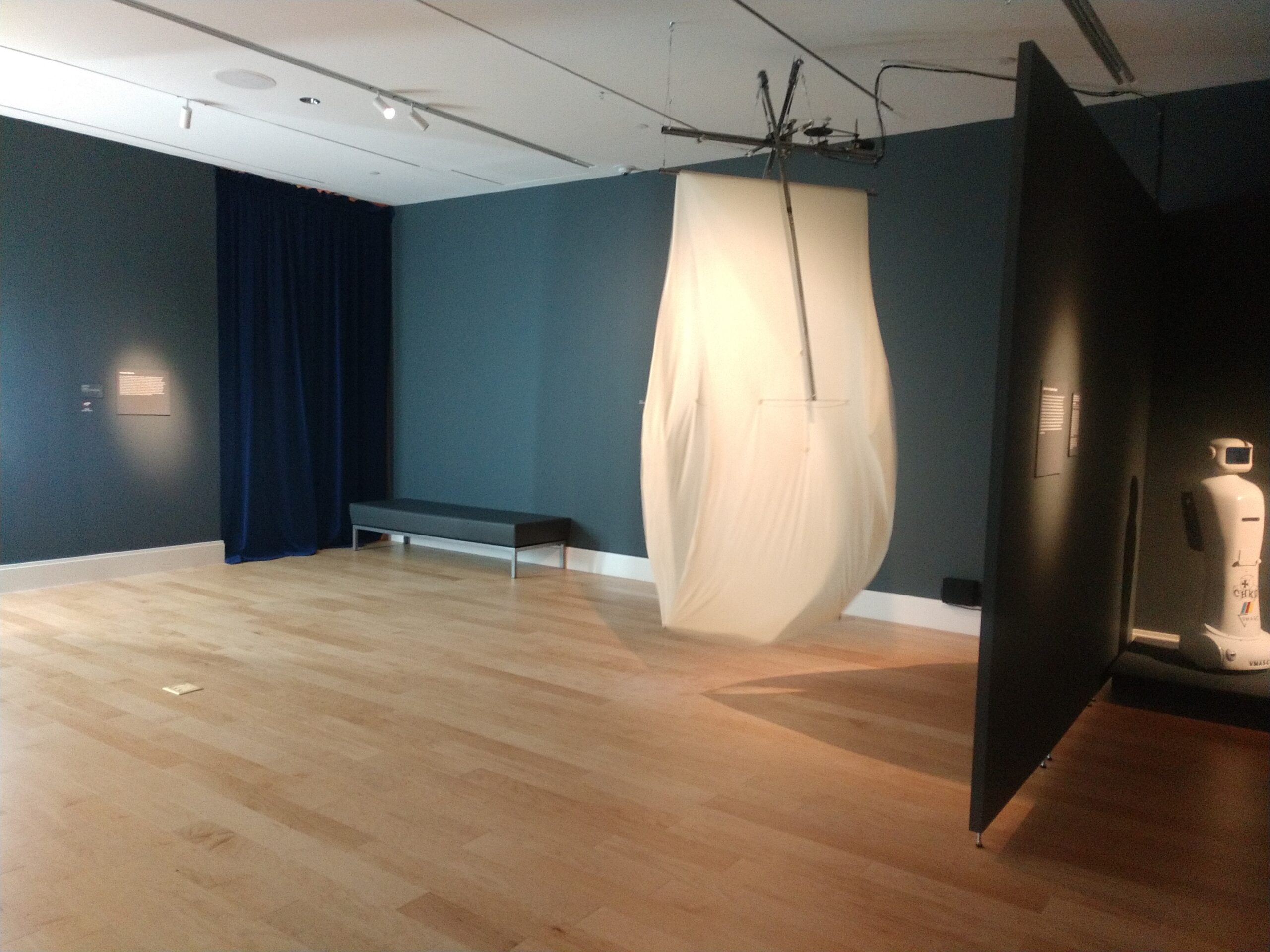
No exhibition is a solo effort either, and the rest of this post is a giant thank you to all the people who’ve worked on this show. First off, I’m grateful to our two contemporary artists, Joseph Morris and Elizabeth King, for agreeing to feature their work. Their practices are fascinating, their work exquisite, and we’re extremely lucky to have such intelligent, thoughtful creatives included in this show.
I can’t commend the Barry staff enough for the work they’ve done in bringing this exhibition to fruition. You can find them all here, but I’d like to commend them individually here as well. Morel Fry, the Museum’s librarian, put together the books and catalogs that proved crucial to my research on the automata in particular. Brett Windham, writer and freelance curator, provided fresh eyes to the exhibition texts, newsletter essays, and other writings for the museum. Janelle Burchfield, the Museum’s head of communications, helped define the show’s aesthetic through her exceptional graphic design work, encompassing banner design, mailers, and social media posts. Suzanne Peterson in Community Outreach created all the educational materials accompanying the show, as well as compiled a fabulous, one-hour video of pop culture clips ranging from Metropolis to South Park. The museum’s art handlers, Luke Stone, Will Sprueill, and Josh Solomon were incredible, deftly installing a range of objects and media with humor and grace while offering their perspectives on layout and placement. Linda Cagney Hirtz designed the vinyl and label text for the show, all while doing a thousand other tasks. As Collections Manager, Christopher M. Norton oversaw all the loan paperwork as well as the entire installation, from the initial movement of pedestals to the final lighting. And finally, as Executive Director, Charlotte Potter-Kasic provided immeasurable creative and professional support throughout the curatorial process, from making initial artist introductions to collaborating on the layout. I’m also indebted to the museum’s security staff and gallery guides, who will know better than anyone the reactions people will have to the show.
The Barry staff has also been deeply encouraging of my work throughout the exhibition process. From my initial proposals to the final label text, they fully supported my decision to address the show’s more challenging topics directly. Throughout the creation of this exhibition, I felt valued and that my work was worthwhile. I’m also grateful to the Museum’s founders, Carolyn and Dick Barry, for sharing their perspectives on their collection while also trusting me to curate the show in the way that I did.
The Exhibition Advisory Board has also been vital to this exhibition. Composed of ODU faculty members, they offered representation from different academic departments across campus, ensuring an interdisciplinary tone to the show. They also procured many of the objects on display, with Yiannis Papelis helping us secure most of the ODU projects on view. They also served as resources for me throughout the research and writing process. As I mentioned in a previous post, my conversations with Yvette Pearson in particular were crucial as I thought through the two SimIs works.
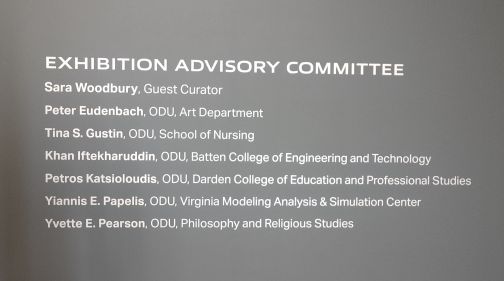
Brandon also deserves credit for his endless support. As with my dissertation work, he has shown interest and curiosity, asking me about robots, sharing relevant media and text he’d found on his own, and patiently listening whenever I needed to vent the inevitable frustration that comes with any kind of work. He also attended the opening with me, taking in the exhibition for himself as well as meeting the staff I’d been working with for the past year. As with all of my endeavors, Brandon is a supportive and enthusiastic partner, actively encouraging me to be the best version of myself professionally and personally.
Working on this exhibition may not relate directly to my dissertation research, but it’s been a rewarding experience that’s reminded me why I enjoy curatorial work. Motion/Emotion will be on view through December 31st, so if you’re in town, be sure to check it out.
